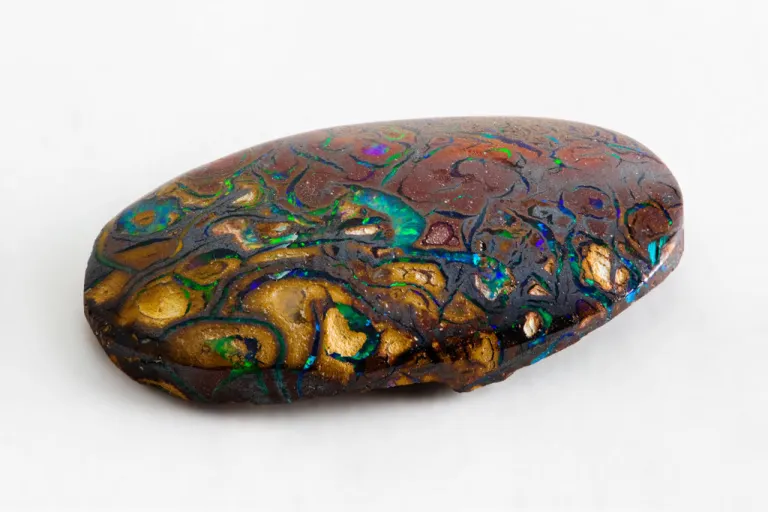
Appearance
One of the most sought-after and enigmatic gemstones in the world, opals are a singular and captivating stone recognized for its unusual play of color. Opals have an amorphous, non-crystalline structure, in contrast to the crystalline structure of many other gemstones. Their distinct optical qualities are caused by this absence of crystallinity.
Geographical Distribution
The following regions are native to this mineral:
Australia: Some of the most well-known and prized opals in the world, such as Boulder, White, and Black opals, are native to Australia. Opal mines can be found throughout the Australian outback, especially in areas like Lightning Ridge, Coober Pedy, and Queensland.
Ethiopia: In recent times, Ethiopia has emerged as a notable producer of opals, especially Welo and Mezezo opals, which are known for their vibrant color play.
Mexico, Brazil, and the United States: These countries also contain deposits of opal; Mexico is well-known for its Fire Opals, while Brazil is noted for its colorful Opalinas. Nevada is the largest producer of valuable opals in the United States.
History
They originated in Ethiopia, most likely around 4000 B.C. Opal discoveries and mining have historically followed the same path as the production of diamonds, emeralds, rubies, and sapphires. Early people discovered several kinds of gemstones and gradually learnt how to mold them into ornamental forms.
Chemical Composition
The main component of opals is silica, or hydrated silicon dioxide (SiO2·nH2O). Opals’ water content varies and is a significant factor in the gemstone’s optical characteristics.
Types
Precious Opals:
These are opals that exhibit opalescence, the well-known color play. The distinctive arrangement of silica spheres within the opal produces vibrant colors by diffraction and scattering light. This is the cause of the color play.
Common Opals:
A color play is not seen in common opals. They might have a single, consistent body color and are usually opaque to translucent. They can nevertheless be valued and appealing even though they don’t have the same iridescence as costly opals.

Uses
- Jewelry:
Rings: Opal rings are a well-liked option for fashion and engagement rings. To accommodate a range of preference and styles, they can have a variety of opal types and settings.
Necklaces: Opal necklaces and pendants highlight the beauty of the gemstone and are frequently worn as eye-catching accessories.
Earrings: From basic studs to more elaborate dangle and drop earrings, opal earrings are available in a variety of styles.
Bracelets: Opals are used in opal bracelet designs as accent stones or as the main feature.
Brooches: Opals is used to create pins and brooches that accentuate color and style in apparel.
- Gemstone Collecting:
Gemstone collectors are drawn to opals, particularly valuable opals with remarkable color play. Because opals are so distinctive and rare, some collectors may concentrate on obtaining opals from particular areas or with particular qualities.
- Art and Decorative Items:
Opals are used to create sculptures, artwork, and decorative goods. The iridescence and vivid colors of these objects might improve their aesthetic appeal.
- Religious and Spiritual Significance:
Opals are connected to healing and spiritual qualities in various civilizations. They can be worn as prayer beads, amulets, or talismans.
- Birthstone Jewelry:
The traditional birthstone for the month of October is opal. Since opal jewelry is said to offer good luck and positive energy, people born in this month frequently get it as birthday presents.
- Custom and Artisan Jewelry:
Opals are frequently used by jewelry designers and craftspeople to create one-of-a-kind, handcrafted pieces. This makes it possible to create unique, customized products that satisfy particular tastes and preferences.
- Opal Inlays and Mosaics:
Opals are occasionally used to create intricate mosaics and inlay work for decorative items like musical instruments, furniture, and tiles.
- Ethical and Sustainable Jewelry:
In response to clients who place a high value on ethical gemstone selections, some jewelers are catering to this increased awareness by offering opals from fair trade and responsibly mined sources.
Table





